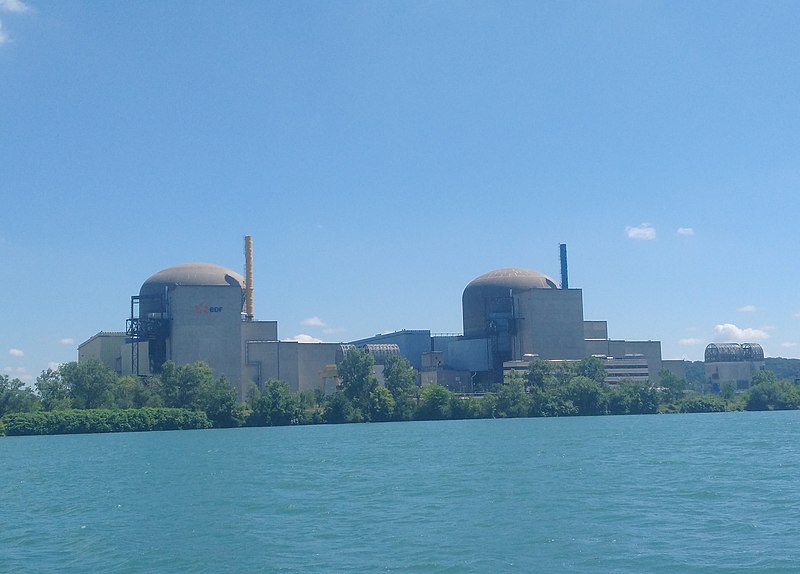River water is often used in many parts of the world to cool steam condensers at all types of thermal power plants, including at nuclear, coal, and gas-fired units. The water picks up heat as it passes through the condenser and returns to the river. However, regulators often place temperature restrictions on the cooling water to prevent harm to the environment, which could be caused if limits were exceeded.
Extreme heat and the driest July on record in France have caused river temperatures to reach certain thresholds that restrict nuclear plant output at some sites. Bloomberg reported that the Saint-Alban plant will operate “at a minimum of 700 megawatts, compared with a total capacity of about 2,600 megawatts” and that “reductions are also likely at the Tricastin plant, where two units will maintain at least 400 megawatts.” The minimum output limits reported by Bloomberg are presumably intended to maintain grid stability while plants restrict output to keep river water under the maximum permitted discharge temperatures.
The Saint-Alban nuclear power plant is located on the Rhone River about 50 kilometers (km) downstream of Lyon. The Tricastin site, meanwhile, is located in southern France, about 140 km north-northwest of Marseille. The power plant is near the Donzère-Mondragon Dam on the Canal de Donzère-Mondragon, which is a canal of the Rhone River.

1. The Saint-Alban Nuclear Power Plant in France. Courtesy: Creative Commons / Sebleouf
Reuters reported in July that production restrictions had also been placed on the Bugey plant, which is also on the Rhone River, and on the Blayais plant and the Golfech plant, which are both on the Garrone River. The maximum river temperature before restrictions kick in at the Bugey plant is 26C, while that at the Golfech, Tricastin, and Saint-Alban plants is 28C, and Blayais is 30C, according to Reuters.
Production from the French nuclear fleet has also been affected by ongoing maintenance at half of the countries 56 reactors. At least some of the maintenance was spurred by the discovery of stress corrosion cracking on the Civaux Unit 1 reactor at the end of 2021. Since then, EDF has carried out a considerable amount of work to more clearly understand the phenomenon and identify the zones concerned. It intends to inspect all of its reactors by 2025, but has prioritized inspection of the most susceptible zones of the N4 and P’4 reactors.
Low river levels in Germany are adding to the crisis as barges delivering coal to power plants are having trouble getting through. Bloomberg reported the Rhine River, specifically, was “on the brink of having to close to commercial traffic at a key waypoint,” which was said to be “stymieing the flow of coal that’s increasingly needed for power generation.” Germany’s Danube River and the Po River in Italy were also reported to be notably low.